Programa de Pós-Graduação em Química
NOTÍCIAS EM DESTAQUE
-
EDITAL DE SELEÇÃO 2025.2
A Coordenação do Programa de Pós-Graduação em Química (PPG-Química) da Universidade Federal de Pernambuco (UFPE) torna público o presente Edital, através do Boletim Oficial da UFPE e pelo endereço eletrônico, estabelecendo as normas do Processo Seletivo para Admissão (PSA) ao corpo discente do Programa de Pós-Graduação em Química, cursos de mestrado e doutorado, para o segundo semestre do ano letivo de 2025. O edital pode ser acessado na página do SIGAA, ou pelo arquivo abaixo:
-
PRÊMIO CAPES DE TESE (Edição 2025)
A tese indicada pelo Programa de Pós-Graduação em Química (UFPE) para concorrer ao Prêmio CAPES de Tese (Edição 2025) foi da aluna Ilaria Martina Silva Lins. Ilaria defendeu a tese em 2024 e foi orientada pela Professora Dra. Janaína Versiani. Estamos na torcida pela premiação!
-
DOUTORADO SANDUÍCHE NO EXTERIOR (PDSE)
A Coordenação do Programa de Pós-Graduação em Química da Universidade Federal de Pernambuco (PPGQ/UFPE) torna público as normas do processo seletivo de discentes para pleitear bolsa de doutorado sanduíche no exterior (PSDE), atendendo as normas do Edital PROPG/UFPE no 08/2024 vinculado ao programa de Doutorado Sanduíche no Exterior (PDSE), da Coordenação de Aperfeiçoamento de Pessoal de Nível Superior (Capes Edital 26/2024). O edital e o resultado podem ser conferidos abaixo:
<<EDITAL INTERNO N ° 02/2024>>
-
EGRESSO DO PPG NA MÍDIA
O Dr. Denys Santos, egresso do Programa de Pós-Graduação em Química da UFPE, é o destaque do 3° episódio da 3ª temporada da série HPC Spotlight, produzida pela Versatus HPC. Esta série conta a trajetória acadêmica e contribuições científicas de pesquisadores, ao redor do Brasil. Hoje, o Dr. Denys é professor no PPG e coordena o Laboratory for Molecular Modeling and Computational Methods, onde desenvolve pesquisas inovadoras em softwares de Química Computacional, modelagem de sistemas biológicos, design de fármacos e biofísica computacional. O vídeo da entrevista pode ser acessado no link.

Internship
Internship

Scholarships
Scholarships

Courses
Courses
Compulsory Courses: As required by the Graduate Program in Chemistry, the graduate student enrolled in the program must take three courses in different sub-areas of Chemistry. The complementation of credits must be done through participation and approval in elective courses and special courses.
Special Courses: In addition to the 6-month courses offered by the Graduate Program in Chemistry, extra-curricular courses are offered annually through the Program. These courses are generally taught by invited Professors in the form of condensed modules.
In addition to this, the Graduate Program in Chemistry started the Environmental Molecular Sciences course in the first semester of 2011 administered jointly by Prof. Roberto Lins and Brian Lower for graduate students at the Federal University of Pernambuco and Ohio State University via real-time teleconferencing. The course is offered exclusively in English, being a pioneering experience in Federal Graduation courses in Brazil.
Set of Courses offered by the Graduate Program in Chemistry (60 hours each):
Advanced Organic Chemistry I
Syllabus: Chemical bonds. Aromaticity. Pericyclic reactions. Stereochemistry. Carbocations, carbanions, free radicals, carbenes and nitrenes. Determination of mechanisms for organic reactions - study of products and kinetics. Acidity and basicity. Photochemistry.
Advanced Organic Chemistry II
Syllabus: Aliphatic nucleophilic substitution, electrophilic aromatic substitution, aliphatic electrophilic substitution, nucleophilic aromatic substitution and free radical substitutions. Reactions from additions and injunctions. Oxidation and reductions. Rearrangements.
Bibliography
- Jerry March, Advanced Organic Chemistry, John Wiley & Sons, Inc., New York.
- F. A. Carey & R. J. Sundberg, Advanced Organic Chemistry, Parats A & A, Plenum Press, New York.
- J. M. Harris & C. C. Wamser, Fundamentals of Organic Reaction Mechanisms, John Wiley & Sons, Inc., New York.
Spectroscopy in Organic Chemistry
Syllabus: Energy and the electromagnetic spectrum. Spectroscopy in infrared (theory and applications). Spectroscopy of Nuclear Magnetic Resonance of 1H and 13C Nuclei. 2D r.m.n. and "Chemically Induced Dynamic Nuclear Polarization" (CIDNP). Ultraviolet and visible spectroscopy, theory of electronic spectroscopy, applications of electronic spectroscopy. Mass Spectrometry: basic principles, instrumentation, metastable ions and fragmentation processes. Structural elucidation through the joint application of ultraviolet, infrared, nuclear and mass magnetic resonance.
Bibliography
- W. Kemp, Organic Spectroscopy, Macmillan Publishers Ltd., London.
- R. M. Silverstein, G. C. Bassler & T. C. Morrill, Spectrometric Identification of Organic Compounds, John Wiley & Sons Inc., New York.
- D. H. Williams & I. Fleming, Spectroscopic Methods in Organic Chemistry, McGraw-Hill Book Company (UK) Limited.
Advanced Inorganic Chemistry
Syllabus: Chemical bonding in coordination compounds. Inorganic solids. Organometallic compounds. Reactivity of transition metal compounds. Mechanisms of inorganic reactions. Oxidation reactions and oxidising agents. Reactions of catalysed oxidation through metals. Bioinorganic.
Bibliography
- J. W. Huheey, Inorganic Chemistry (Harper and Row).
- B. Douglas, D. H. McDaniel, J. J. Alexander, Concepts and Models of Inorganic Chemistry (John Wiley and Sons, Inc.).
- F. A. Cotton and G. Wilkinson, Advanced Inorganic Chemistry (John Wiley and Sons, Inc.).
Chemistry and Theory of Groups
Syllabus: Definitions and theorems of group theory. Molecular symmetry and symmetry groups. Group theory and quantum mechanics. Symmetry and selection rules. Symmetry and theory of molecular orbitals. Symmetry and molecular vibrations.
Bibliography
- F. A. Cotton, Chemical Applications of Group Theory (John Wiley and Sons, Inc.).
- D. C. Harris and M.D.Bertolucci, Symmetry and Spectroscopy (Oxford Univ. Press).
- M. Tinkham, Group Theory and Quantum Mechanics (McGraw-Hill).
Quantum Chemistry
Syllabus: Principles of quantum mechanics. Atomic structure. Molecular structure. Interaction of radiation with matter. Collisions.
Bibliography
- H. Weissbluth, Atoms and Molecules (Academic Press).
- I. Levine, Quantum Chemistry (John Wiley and Sons, Inc.).
- H. Eyring, J. Walter and G. E. Kimball, Quantum Chemistry (John Wiley and Sons, Inc).
Molecular Spectroscopy
Syllabus: The interaction of radiation with atoms and molecules. Absorption and emission coefficients. Rotational, vibrational and electronic spectrum of molecules. Nuclear magnetic resonance. Mössbauer spectroscopy. Experimental measures.
Bibliography
- I. Levine, Molecular Spectroscopy (John Wiley and Sons, Inc.).
- J. I. Steinfeld, Molecules and Radiation: An introduction to modern molecular spectroscopy (Harper and Row).
- J. C. Davis Jr., Advanced Physical Chemistry, Molecules, Structure and Spectra.
Chemical Kinetics
Syllabus: Theory of collisions. Cross section, velocity, energetics and mechanisms of chemical reactions. Gas phase reactions. Reactions in condensed means.
Bibliography
- J. H. Espenson, Chemical Kinetics and Reaction Mechanism (McGraw-Hill).
- S. Gladstone, J. Laidler and H. Eyring, Theory of Rate Processes (McGraw-Hill).
- R. D. Levine and R.B.Bernstein, Molecular Reaction Dynamics (Oxford University Press).
Electrochemistry
Syllabus: Structure of solutions. Transport in solution. Electrochemical kinetics. Batteries. Combustion cells. Corrosion. Deposition of metals. Bio-electrochemistry. Research Techniques.
Bibliography
- J. Bockris and A.Reddy, Modern Electrochemistry (Plenum Press), volumes 1 e 2.
- A. J. Bard and L. R. Faukner, Electrochemistry Methods: Fundamentals and Applications (John Wiley and Sons, Inc.).
Ligand Field Theory
Syllabus: Theory of atomic spectrums. Symmetry and the crystalline field. Molecular orbitals. Vibrational interactions. Electronic structure of compounds from transition elements and lanthanides. Electro-optical effects.
Bibliography
- C. J. Ballhausen, Introduction to Ligand Field Theory (McGraw-Hill).
- B. N. Figgs, Introduction to Ligand Fields (Intersicence Publishers, John Wiley and Sons, Inc.).
- C. K. Jorgense, Modern Aspects of Ligand Field Theory (North-Holland).
Thermodynamics Statistics
Syllabus: Ensembles and the statistical formulation of the 1st and 2nd laws of thermodynamics. Classical and quantum statistical mechanics. Mono and polyatomic ideal gas. Translational, rotational, vibrational, and electronic partition functions. Chemical balance. Ideal crystalline networks. Fluctuations.
Bibliography
- D. A. McQuarrie, Statistical Thermodynamics, University Science Boody, 1973.
- R. C. Tolman, The Principles of Statistical Mechanics, Oxford University Press, 1967.
- F. Reif, Fundamentals of Statistical and Thermal Physics (McGraw-Hill).
Computational Techniques in Chemistry (I)
Syllabus: "ab-initio" molecular calculations.
Bibliography
- J. P. Come, Quantum Chemistry (Academic Press).
- J. A. Pople and D.Beveridge, Approximate Molecular Orbital Theory (McGraw-Hill).
- M. J. S.Dewar, The PMO Theory of Organic Chemistry (Plenum).
Computational Techniques in Chemistry (II)
Syllabus: Characteristics of floating point systems. Structured programming in Fortran. Fortran code optimisation techniques. The Fourier transform. Spherical harmonics. Bessel functions. Atomic orbitals and their integrals. Program coding for molecular calculations with floating Gaussian orbitals.
Bibliography
- M. Abramowitz and I. A. Stegun, eds., Handbook of Mathematical Functions. (Dower Pub. Inc.).
- G. Dahlquist and A. Bjorck, Numerical Methods (Prentice-Hall Inc.).
- J. D. Talman, Special Functional: A Group-Theoretic Approach (W.A.Benjamin Inc.).
Biological Chemistry
Syllabus: Introduction to the structural components of biological macromolecules and the physicochemical principles that determine the structure and function of biomolecules. The course offers a molecular approach to the structure, properties and biological functions of proteins, nucleic acids, carbohydrates and lipids, as well as fundamental biological processes such as enzymatic catalysis, replication (DNA biosynthesis), transcription (RNA biosynthesis) and translation (protein biosynthesis) and protein folding.
Program Content
- Fundamentals of Chemistry Applied to Biochemistry
- Amino Acids, Proteins
- Kinetics and Enzymatic Catalysis
- Protein Folding
- Nucleotides, Nucleic Acids (DNA, RNA)
- Replication (DNA Bio-Synthesis)
- Transcription (RNA Bio-Synthesis)
- Translation (Protein Bio-Synthesis)
- Carbohydrates
- Lipids, Biological Membranes
- Techniques for Determining the Structure of Biomolecules
Bibliography
- D. Voet and J. Voet. Biochemistry. Third Edition. Wiley. 2004.
- J. M. Berg, J. L. Tymoczko and L. Stryer. Biochemistry. Sixth Edition. W. H. Freeman. 2006.
- P. Atkins and J. de Paula. Physical Chemistry for the Life Sciences. W. H. Freeman. 2006
- Textos da literatura científica na área.
Special Topics in Chemistry (I, II, III and IV)
Syllabus: A program that varies from semester to semester geared towards attending to the interests of students and professors in current chemistry topics. These courses are programmed to follow and encourage the dynamics of teaching and research planned by the DQF.
Chemometrics 1 - The Planning and Optimisation of Experiments
Syllabus: Mechanistic and Empirical models. Data and variables. Factors and responses. Evolution of the experimental environment. Stages of an experiment. Populations, samples and distributions. Random sampling. Distribution of frequencies. Mean, variance and standard deviation. Degrees of freedom. Sample values and population values. Normal distribution. Standardisation of a normal variable. Probability of specific values occurring. Central limit theorem. Confidence intervals from one observation. Anomalous observations. Covariance and correlation. Linear combinations of random variables. Random sampling in normal populations. The t distributions, chi-square and F. Confidence intervals from averages. Comparisons with a reference value. Determination of sample size. Introduction to statistical process control. Comparison of two treatments. Comparing two means. Comparing matched samples. Comparing two variances. A 22 factorial design. Geometric calculation and interpretation of effects. Estimation of the experimental error of an effect. Interpretation of results. Algorithm to calculate effects. Statistical model of 22 planning. 23 factorial planning. Effects calculation. Estimation of errors. Interpretation of results. Statistical model. Geometric interpretation. 24 Planning. Analysis using normal graphs. Evolutionary operation with two-level factorials. Fractional factorial schedules. Half fractions. Generating relationships. Resolution of fractional factorials. Inert variables. Saturated schedules. An example of a factorial of three resolution. Least squares modelling: a univariate example. Analysis of variance. Confidence intervals. Lack of adjustment and pure error. Complete ANOVA. Methodology of Response Surfaces. An experimental example with three factors and two answers. Mixtures of two components. Mixtures of three components. One example. Cubic models. Pseudo-components. Other planning for blending. Mixtures with more than three components. Simplex optimisation. The basic simplex. The modified simplex. The super-modified simplex. Closing Workshop: Presentation and discussion of experiments.
Bibliography
- B. B. Neto, I. S. Scarminio e R. E. Bruns. Planejamento e otimização de experimentos. Editora da Unicamp (1995).
- G. E. P. Box, W. G. Hunter e J. S. Hunter. Statistics for experimenters. An introduction to design, data analysis and model building. Wiley (1978).
- J. D. Petruccelli, B. Namdram e M. Chen. Applied statistics for engineers and scientists. Prentice-Hall (1999).
- F. L. Ramsey e D. W. Schafer. The statistical sleuth. Duxbury (1996).
Chemometrics 2 - Multivariate Analysis in Chemistry
Syllabus: Introduction. General characteristics of multivariate analysis. Types of variables. Notation. Review of linear algebra and statistics. Exploratory analysis. Visualization of data. Principal component analysis. Analysis of hierarchical groupings. Classification analysis. Nearest neighbour method. Class analogy modelling by similarity (SIMCA). Calibration. Multiple linear regression. Regression in main components. Regression through partial least squares. Additional Topics.
Bibliography
- M. A. Sharaf, D. L. Illman e B. R. Kowalski. Chemometrics. Wiley, 1986
- K. Beebe, R. Pell e M. B. Seasholtz. Chemometrics – A practical guide. Wiley, 1998
- M. Otto. Chemometrics. Wiley-VCH, 1999
- D. L. Massart et al.,. Handbook of Chemometrics and Qualimetrics. Elsevier, 1999
- Textos de referência na internet
- Artigos da literatura, de acordo com o assunto.
New schedule for graduate courses for 2011.1
I. Compulsory courses:
1) Graduate Seminars -1 and -2;
2) Colloquia 1 and 2;
3) Special Topics in Chemistry 2: Physical-Organic Chemistry
4) Advanced Inorganic Chemistry 1
5) Advanced Organic Chemistry 1
II. Elective courses:
1) Special Topics in Chemistry-1: Preparation of Materials
2) Special Topics in Chemistry 3: MRI
3) Special Topics in Chemistry 4: Simulation of Biomolecules;
4) Special Topics in Chemistry 5: Supramolecular Chemistry
5) Special Topics in Chemistry 6: Scientific Methodology
6) Biological Chemistry

Selection
Selection
The rules for the Graduate Program in Chemistry selection process are published in the form of a Public Notice that must be sanctioned by the Dean of Research and by the Dean's Office during each selection process. Because of this, we will no longer be publishing the selection rules on this site for the Graduate Program in Chemistry, but we instead advise Portuguese-speaking candidates to consult the text published in full on the respective Official Gazette of the Union for each selection.
For further information regarding the text in the Official Gazette of the Union, candidates should contact the Secretariat of the Graduate Program in Chemistry
The Selection process for UFPE's Graduation Program in Chemistry takes place every six months, in November for enrolments in the first semester of the following year, and in the month of May for enrolments in the second semester of the same year as the Selection.
- Registration Steps:
1. Through the link http://dqfnet.ufpe.br/ppg-sys/, provided they submit the original documentation at the time of enrolment. Failure to submit the original documentation at enrolment will result in the applicant being disqualified.
2. In-person or via proxy through the submission of a power of attorney at the Secretariat of the Graduate in Chemistry at the UFPE's Department of Fundamental Chemistry at 8:00 am - 12:00 noon and 2:00 pm to 5:00 pm.
3. Through mail (mailed with a return receipt), provided that it is received by the Program by the closing date of registrations, and the Program is not responsible for delays due to postal delivery. Registration by mail must be sent to:
Att. Coordenador do Programa de Pós-Graduação em Química
Secretaria do Programa de Pós-Graduação em Química
Departamento de Química Fundamental - DQF
Centro de Ciências Exatas e da Natureza - CCEN
Universidade Federal de Pernambuco - UFPE
Av. Prof. Luiz Barros Freire, S/No. Cidade Universitária
50.740-540, Recife – Pernambuco - Brasil
Previous Entrance Exams
General Chemistry
- Exame - Seleção 2006.1
- Exame - Seleção 2006.2
- Exame - Seleção 2006.3
- Exame - Seleção 2007.1
- Exame - Seleção 2007.2
- Exame - Seleção 2007.3
- Exame - Seleção 2008.2
- Exame - Seleção 2009.1
- Exame - Seleção 2010.1
English Language
- Electrochemistry
- Instrumental methods and Chemometric Analysis
- Inorganic Chemestry and of New Materials
- Computational and Theoretical Chemistry
- Organic Synthesis
- Físico-Química (incluindo Química Teórica e Computacional)
- Química Inorgânica
- Química Orgânica
- Química Analítica
Em construção.
O Programa de Pós-Graduação foi criado em 1989, e desde então tem formado professionais altamente qualificados para atuarem na área de Química e área afins. Se você foi discente do nosso Programa, e o seu nome não consta na nossa lista de egressos abaixo, por favor entre em contato com a Secretaria e nos envie nome completo, endereço de email para contato e a sua atual situação profissional.
Se você quiser saber mais sobre a experiência dos discentes do Programa de Pós-Graduação em Química, acesse os testemunhos dos nossos discentes egressos aqui.
PROGRAMA DE PÓS GRADUAÇÃO EM QUÍMICA
Formulário para indicação de Orientador (novos discentes).
Formulário para indicação de Orientador (novos discentes).
1. Preencher formulário da CAPES para rembolso de até 02 diárias por membro externo.
2. Anexar título da apresentação, data, e local do Colóquio Especial necessário para financiamento de membros externos pelo PPG-Química. Conforme votado pelo Colegiado do PPG-Química na Reunião Anual de 2015, foi decidido que apenas membros externos participando de Colóquios no Programa poderam receber auxílio financeiro do para o PPG-Química.
3. Contactar a secretrária do PPG-Química, Sra. Patrícia Santa-Rosa com um orçamento de passagens com tarifa econômica. A solicitação deve ser feita com ao menos 01 mês de antecedência da data de viagem em consideraçãoo para garantir valores de tarifas compatíveis com o atual orçamento do PPG-Química.
4. Coletar todos os documentos e apresenta-los na forma impressa ao Sr. Gustavo Souto, consultor financeiro do PPG-Química.
Programa de Pós-Graduação em Química
Departamento de Química Fundamental - Centro de Ciências Exatas e da NaturezaAv. Jornalista Anibal Fernandes, s/n Cidade Universitária 50740-560 Recife, PE, Brazil
pgquimica@ufpe.br +55.81.2126.8402 ou +55.81.2126.8448
